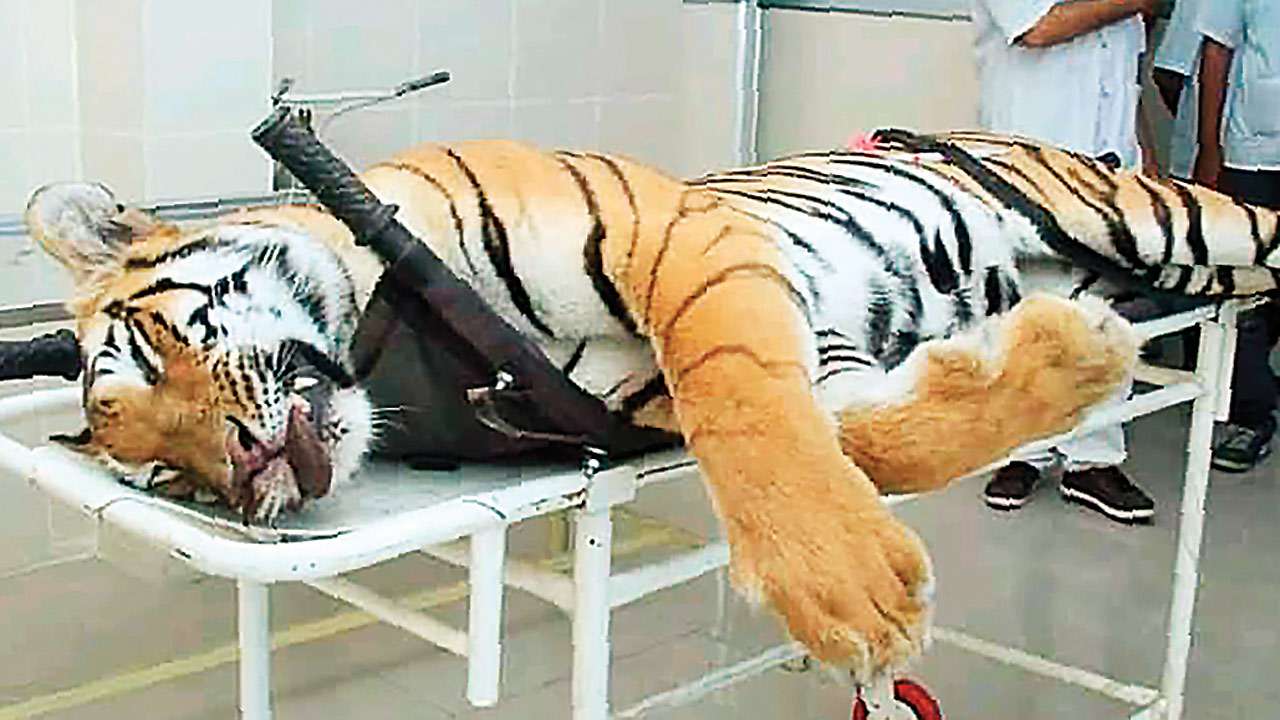
The unfortunate death of Avni, T1 tigress from Pandharkawada, shook the entire country. Animal lovers across the world mourned her death and are now worried about the future of her two cubs. Serious concerns are being expressed about the way the whole operation was carried out by Maharashtra Forest Department (MFD), especially with the involvement of a controversial hunter from Hyderabad.
Tigress Avni reportedly killed 13 human beings in the past two years. Her territory lies in between Tadoba-Andhari Tiger Reserve and Tipeshwar Wildlife Sanctuary. Avni is believed to have been born in Tipeshwar and then settled in Pandharkawada. Why and how she turned to man-eating is something that has baffled many tiger biologists and conservationists. Ever since Avni made her first kill, the forest department has been following her movements. Camera traps were set and Avni’s presence was seen on at least five human kills (out of the 13) and this evidence, coupled with DNA analysis, was considered to be conclusive to term Avni as a ‘man-eater’. A tigress with cubs will always teach her cubs to ‘hunt’ prey. If the prey, unfortunately, is a human being, the cubs are most likely to ‘learn and consider’ humans as their natural and easy prey.
The intense public outcry on the death of Avni is mainly because she was hunted by the controversial hunter’s son at night flouting the protocol laid down by the NTCA. India has many capable officers with wildlife and veterinary training; and they should have been deployed to tranquilise the tigress and put her in captivity, along with her cubs. In 2018 alone, 28 people have been killed in human-tiger conflict in Maharashtra and so MFD should have been better prepared in creating a task force from within its own force to deal with such situations instead of depending on hunters from outside.
Lakhs of people are criticizing MFD and reputed conservationists who have lent their support to MFD in Avni’s case. Abuses are being hurled, those involved in Operation Avni are being subjected to public shaming and ‘declared’ guilty by social media activists of killing an innocent tigress in cold blood. I find this behaviour totally absurd and condemnable. The online petition started by activists said that Avni and her cubs should be captured and shifted to other undisturbed forest areas. This suggestion was purely idealistic and lacked the understanding of grassroots conservation issues in India. Inviolate tiger habitats are possible only in core zones of Tiger Reserves but not in other forest areas. To have captured Avni with her cubs to be released in another wilderness area, as suggested by animal rights groups, would have put people’s lives at risk in the new area. This would have fuelled the wrath of local villagers against tigers and would have been counterproductive to all the tiger conservation efforts being done by government and NGOs. People taking the law into their hands to crush a tiger under a tractor near Dudhwa Tiger Reserve two days ago is an unfortunate example of human-tiger conflict turned worst.
Local communities in India are quite tolerant when it comes to living with wildlife. There are several incidences of human life being lost due to tiger, leopard or bear attacks — most of the time due to chance or surprise encounters. However, not all affected families have resorted to retaliatory measures. Villagers having their crop fields close to the forests often face severe crop losses due to wild herbivores. A holistic approach to conservation is the most effective way to deal with mitigating human-wildlife conflict situations.
No conservationist willingly suggests putting down a tiger but sometimes decisions need to be taken considering the conservation of tigers as a species and this warrants removal of individual problem animals — animals with a history of man-eating. My request is, before jumping into the bandwagon please try to understand the difference between compassion and conservation! India needs a united voice for conservation of wildlife and preserve wilderness for posterity.
The author is director, The Corbett Foundation